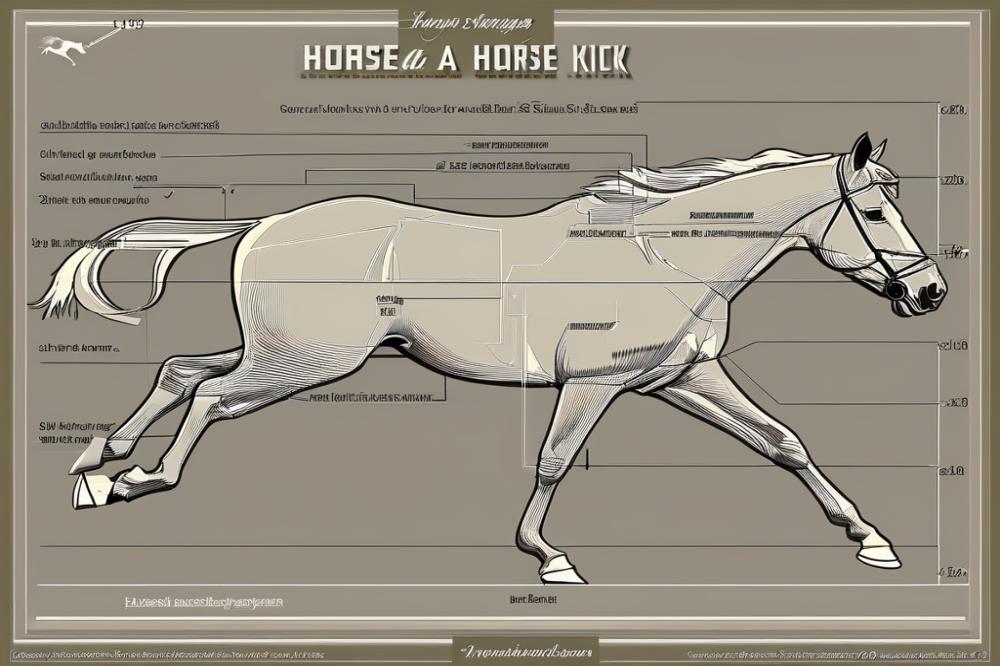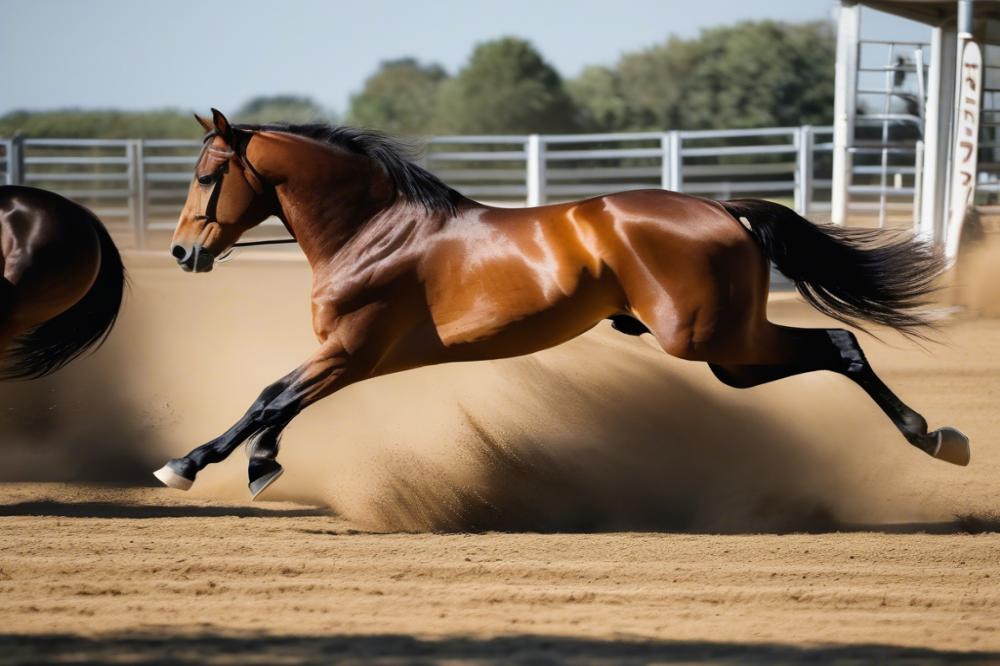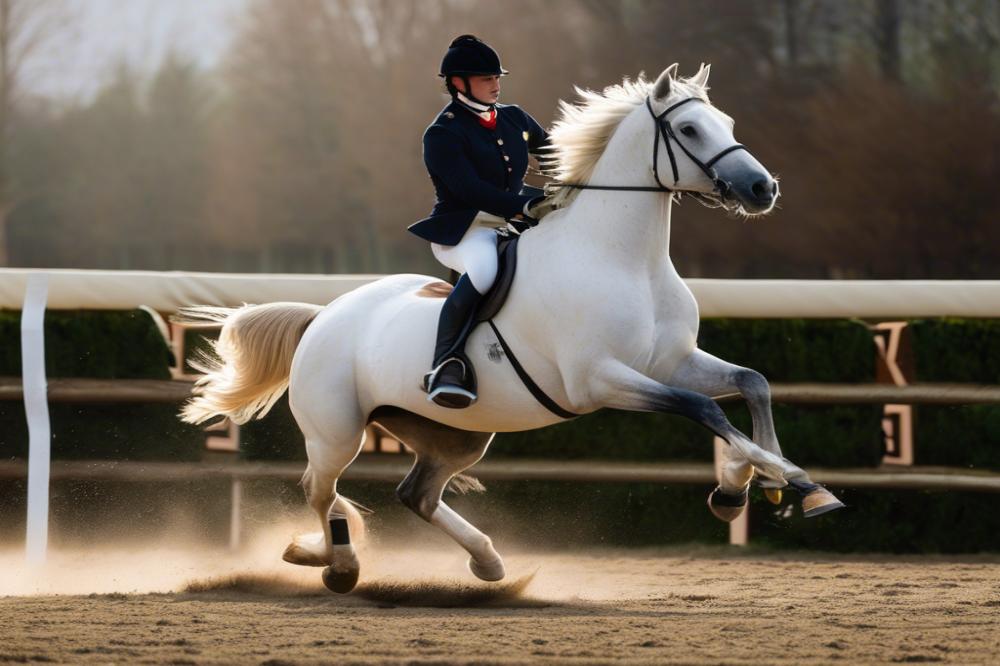Understanding the Power of a Horse Kick
Imagine standing before a majestic horse, feeling the raw power radiate from its large frame. Now, let’s say that horse decides to give you a friendly reminder of just how strong its legs are. Yes, a horse kick can pack quite a punch! But what exactly do we mean by a “horse kick”? Simply put, it refers to the swift and surprisingly forceful action when a horse strikes out with its hind legs. That swift motion is not merely a display; it’s a crucial part of how these magnificent creatures communicate and defend themselves.
Understanding kick strength is vital for anyone involved in horse behavior, whether that be owners, trainers, or even just fascinated onlookers. You see, horses can be unpredictable, and their kicks often come out of instinct rather than malice. If you’ve ever watched the big horse races in USA, you might have seen jockeys handling these spirited animals with care, keenly aware of the risks. Not being vigilant can lead to serious injuries, so a little knowledge about equine safety goes a long way in ensuring that everyone stays happy and healthy around these impressive beings.
The purpose of this article is simple: we want to dive into the science of how a horse kick feels, the anatomy behind that impressive power, and the best ways to make sure both horses and humans remain safe during interactions. Throughout our discussion, we’ll glance at horse training techniques that foster better relationships and explore some horse care tips to keep your four-legged friend at its best. So buckle up! We’re about to trot down a path filled with interesting facts, maybe a few colorful anecdotes, and a sprinkle of appaloosa patterns along the way!
Anatomy of a Horse’s Leg

Horses are impressive creatures, and their legs tell a fascinating story about their strength and agility. Each leg has a complex structure, including bones, muscles, and tendons. The main bones are the femur, tibia, and various small bones in the hoof. Muscles like the quadriceps and hamstrings are crucial for movement. Each part works together in perfect harmony, allowing for those powerful kicks.
Muscle Structure Involved in Kicking

When a horse kicks, a very specific set of muscles engages. These muscles, especially those in the hindquarters, pack a punch! The gluteal muscles, located on the back, deliver the main force. Additionally, the muscles along the thigh contribute significantly. Training a horse can enhance these muscles, improving its overall equine abilities. Efficient kicking relies on coordination. That’s why proper horse training can help harness this energy safely.
Types of Kicks Horses Can Deliver

Horses don’t just deliver one kind of kick; they have a range of them! The most common type is the straight kick, aimed at a threat right in front. There’s also the side kick, which is useful for fending off anything approaching from the side. A less usual kick is a back kick, often reserved for attacking perceived dangers behind them. Understanding horse behavior can be critical for anyone around these powerful animals. Not every kick is a sign of aggression; sometimes, it’s just the horse’s way of expressing discomfort or fear.
Biomechanics of a Horse Kick
Digging into the biomechanics reveals how impressive seemingly simple actions can be. When a horse kicks, energy builds up in its legs. The hind limbs propel the horse forward, generating speed, then release that energy in a swift motion. This kick can reach speeds of up to 200 miles per hour. It’s like watching a coiled spring spring into action! Such high-speed movements are susceptible to causing injury. This highlights the importance of equine safety, both for the horse and anyone nearby. Understanding horse anatomy plays a key role in this. After all, we want to appreciate these creatures’ strengths without putting anyone at risk.
Factors Influencing Horse Kick Strength
Size and Breed of the Horse
When talking about a horse’s kick, its size and breed play a big role. Smaller breeds like Ponies might pack a punch, but they won’t compare to massive draft horses. Think about it—those powerful muscles can create force that would knock you down. Breeds like Thoroughbreds or Arabians, known for speed, might deliver a swift kick with surprising strength. The anatomy behind each type influences how hard they can kick. It’s all about those leg muscles and how they’re shaped.
Physical Condition and Training
A horse that is fit has more power behind its kick. Regular exercise and good nutrition are key to building muscle. Horses that are well-trained may know when to kick or when to hold back. Sometimes, a horse knows the difference between a play kick and a defensive kick. Proper horse care, including routine vet check-ups, can help maintain a horse’s physical condition. Always remember, a healthy horse is a happy horse!
Posture and Angle of the Kick
The way a horse stands can totally change how strong its kick is. If a horse is standing straight and ready, it can deliver a more powerful kick. On the other hand, if it’s off balance or has its legs tucked awkwardly, it might not be as effective. Kicking from a low angle can also impact strength; it’s all about that body mechanics of horse behavior! Imagine a dancer, poised and ready, versus a clumsy one. That’s the difference a good kick position can make.
Being aware of these factors can help you understand the equine abilities of these magnificent creatures. The next time you see a horse, think twice before walking behind one—horse safety is crucial!
Comparative Analysis of Kick Strength
Horse Kick Strength vs. Other Animals
When thinking about animal kicks, horses certainly stand out. Their legs are powerful tools designed to ward off threats. Compare this to a mule or donkey, which also kicks but doesn’t have the same muscle mass. The force of a horse’s kick can reach up to 2,000 pounds. That’s like being hit by a small car! In contrast, a cow has a weaker kick, mainly used for self-defense. While a horse relies on its kicks to fend off predators, a cat swipes with paws instead. This difference highlights the unique strengths found in equine abilities as compared to smaller animals.
Historical Accounts of Horse Kicks in Combat and Work
Throughout history, horses have played important roles in battles and daily work. Knights used horses in combat, and a well-placed kick could be deadly during a fight. Stories from ancient history show how horses were not just riding companions but also warriors on the battlefield. In farming, the solid kick of a horse helped farmers in times of labor. Imagine a team of horses pulling plows, their powerful legs driving into the earth. Horse behavior has shaped many cultures, showing how vital these animals were in everyday life.
Scientific Studies Measuring Kick Force
Science has looked into horse anatomy to understand how strong their kicks are. Researchers have measured kick force using special equipment. By doing this, they can determine just how much energy a horse can release with a single kick. Some studies show that factors like breed can affect kick strength. For example, thoroughbreds often have more power due to their musculature. In training, it’s crucial to work on equine safety, allowing both handlers and horses to understand limits and capabilities. Horse care practices also ensure that these animals stay healthy and strong, further enhancing their natural abilities.
Common Injuries from Horse Kicks
Types of Injuries Caused by Horse Kicks
Horse kicks can lead to a range of injuries. A common one is bruising, which can make a person feel sore for days. Broken bones often occur when the kick hits the right spot. Depending on the force, the leg may fracture. Cuts and lacerations are also possible, especially if a hoof strikes a sharp-edged object afterward. Equine abilities are impressive, but they can lead to mishaps when mishandled. Injuries can also occur in the horse; muscle damage may happen from trying to kick forcefully without proper balance.
Severity and Implications of These Injuries
The severity of injuries can vary widely. Minor bruises may heal quickly, while broken bones can take weeks or months to recover. Such injuries can lead to complications like infections if not treated properly. Long-term consequences might include chronic pain or issues with mobility. Understanding horse behavior is essential. Many people don’t realize that a single kick can change someone’s life. Always consider that the implications can ripple out to affect one’s daily activities and even job responsibilities.
Prevention Strategies and Safety Measures
Safety should always come first when interacting with horses. Keeping a safe distance when a horse is agitated can prevent unexpected kicks. Proper horse training can help ensure that the animal is well-mannered. Educating yourself about horse anatomy is beneficial. Knowing how they think can make a difference in your interactions. Always use equipment like helmets and sturdy boots in areas where horses are present. When leading a horse, walk beside its shoulder instead of behind. This simple change might save your toes! Regular horse care goes a long way. A calm horse is less likely to kick in the first place.
Understanding Horse Behavior Related to Kicking
Reasons Why Horses Kick
Horses don’t just kick for the fun of it. Often, they kick out of fear or when feeling threatened. Imagine a startled horse being approached too quickly. The instinct to kick can be their way of saying, “Back off!” Sometimes, kicking is how they express excitement or playfulness, especially in young horses. Finding a reason behind this behavior is key to managing it safely.
How to Interpret Equine Body Language
Recognizing that equine behavior is rich with signals is important. Ears pinned back often mean a horse is annoyed. If you notice a tail swishing rapidly, it can be a sign of irritation. Keep your eyes peeled for a tense posture, as that might also indicate a horse ready to kick. The best rule of thumb? Always observe before approaching. An understanding of horse anatomy can help you gauge their mood better.
Training Methods to Reduce Kicking Incidents
Training can be a game changer when it comes to minimizing kicks. Positive reinforcement works wonders. Use treats or praise whenever your horse behaves calmly. This encourages good behavior over time. Consistency is key; practice makes a difference. Additionally, setting boundaries will help. Teach your horse to respect your space, making them feel comfortable. A calm approach ensures safer interactions and builds trust.
If a horse kicks, it may be due to anxiety or discomfort. Address these issues directly by examining their living conditions. Ensure they have enough space and social interaction. Sometimes, a simple change in environment can work miracles. Understanding horse care is a whole other topic, but it’s crucial to the mental health of these magnificent creatures. Let’s keep our equine friends happy and safe!
Wrapping It All Up
So, how strong is a horse kick? Well, we’ve journeyed through the fascinating world of equine biology and behavior. Horses possess extraordinary strength in their legs and hooves, making their kicks incredibly powerful—potentially enough to injure humans and other animals. When you think about it, a single kick can exert a significant amount of force. That’s why safety around these majestic creatures is such an important topic.
One key takeaway is the importance of understanding horse behavior. Observing horse ear position meanings can provide valuable clues about a horse’s mood and intentions. If those ears are pinned back or flicking nervously, it’s a clear sign that a horse might not be in the best mood. Approaching with caution is wise. After all, a happy horse is less likely to deliver a memorable kick!
Above all, the utmost respect for the animal is vital. Horses are not just large pets; they are powerful creatures that deserve our attention and understanding. During our exploration, we’ve seen how being informed and aware can enhance safety around horses. Using protective gear, maintaining a safe distance, and recognizing when a horse is stressed are all crucial steps we can take.
Let’s not forget the intriguing question: do spurs hurt horses? The answer is a bit nuanced, as responsible riders use spurs thoughtfully and gently, while others might misuse them, causing discomfort or pain. Keeping our equine friends safe and happy should always come first.
As we wrap this up, it’s important to remember that respect and awareness go a long way in maintaining a healthy relationship with these stunning animals. For those passionate about horses or simply curious, further research is always inviting. With so much to learn about horse behavior, training techniques, and safety practices, there’s a whole world waiting to be uncovered. So, gear up with knowledge—the more we know, the safer we’ll be around these great beings!



